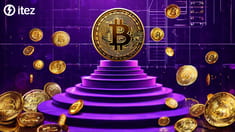Solana FAQ
What is Solana (SOL), and what makes it unique in the crypto world?
Solana is a top-tier blockchain, famous for its speed and scalability. It enables fast and cost-effective decentralized applications (DApps).
How fast are Solana transactions?
Solana is one of the fastest blockchains — its consensus mechanism can handle up to 65,000 transactions per second.
What's Solana's secret sauce for speed and scalability?
Solana employs a combination of innovations: Proof of History (PoH) and Tower BFT, a consensus algorithm. That's what make it fast and scalable.
What's the role of SOL in Solana's ecosystem?
SOL is Solana's native cryptocurrency. It is used for transactions, staking, and participating in governance decisions.
Can Solana challenge Ethereum's dominance in DApps?
Solana provides fast speed and low fees position. Actually, it's already become a strong competitor for Ethereum, as more and more developers are coming to Solana to create their DApps.
How does Solana address scalability issues in blockchain technology?
Solana's unique architecture maximises scalability. It employs a Proof-of-History (PoH) consensus mechanism, a tower Byzantine Fault Tolerance (BFT) algorithm, and a decentralised clock. All those provide solutions to scalability challenges, which, in turn, allows Solana to handle a really impressive high transaction throughput of 65 000 TPS.
What's Solana's approach to decentralization?
Thousands of nodes validate Solana, and they do not depend on each other. The blockchain aims for decentralization with its PoH and PoS hybrid consensus.
Can SOL be used for NFTs (Non-Fungible Tokens)?
Yes, Solana's blockchain supports the use of NFTs. It even has its own marketplace called Solanart, which provides users with access to digital collectibles.
How secure is Solana against attacks?
Well, no system is completely secure. But Solana's intensive logging capability and consensus mechanism make it harder to exploit.
What's Solana's vision for DeFi (Decentralized Finance)?
Solana is actively attracting DeFi projects as it offers a fast and low-cost environment for decentralised applications (dApps).
Can SOL be used for cross-border payments?
Yes, as Solana's high-speed and low-cost transations make it suitable for cross-border payments. Its architecture is perfect for handling an enourmous number of transactions quickly and efficiently.
How does Solana foster innovation in the crypto space?
Solana fosters innovation by supporting the high level of performance of its blockchain and enabling low-cost transactions. Developers are able to create their dApps as Solana provides them with scalable infrastracture.
What's the significance of SOL's partnerships in Solana's growth?
By making partnerships Solana drives use cases, fosters innovation, expands its ecosystem, and attracts new developers, enterpreneurs, and users. Some of the most prominent ones include collaborations with Serum DEX, ChainSafe, and Chainlink.
Is SOL's price correlated with network activity?
Network activity can indeed impact SOL's price. But there are many more factors like sentiment and regulatory developments, which play a more important role in determining the asset's value.
What's Solana's plan for the future?
Solana's ecosystem is actively growing — the memecoins are in the lead. The project attracts more new users and keeps on building its infrastructure. Solana is also increasing dominance in DeFi and NFT sectors, in some aspects surpassing Ethereum. The network holds on very much but users should never forget to do their own research and draw their own conclusions.
Can SOL be integrated with other blockchains?
Yes, Solana is interoperable and enables cross-chain decentralised applications (dApps), NFT marketplaces, and other Web3 solutions.
How does Solana impact traditional finance and institutions?
Solana allows tokenization of assets, which is a new and already popular trend in the market. SOL's ecosystem has actually a lot to offer the traditional finance and institutions. It efficient, fast, and lower cost transactions are what stands Solana apart from the traditional instruments. To offer all these to a wider audience, the project is partnering with big companies, such as Visa.
Is Solana's growth sustainable?
It's hard to say as Solana's growth primarly depends on such factors as its technology development and overall market's conditions. In the crypto industry, everything changes really fast, so users should always draw their own conclusions.
What challenges does Solana face in its journey?
Solana faces lots of challenges, just like any other crypto project. In particular, it's decentralisation, which is actually a long-term goal, so developers should always remember to stick to it while creating new solutions and releasing upgrades. Besides, adoption, use cases, security, and regulatory environment are some of the hottest issues Solana has yet to come across.
Articles
 Top 5 Cryptocurrencies in 2024
Top 5 Cryptocurrencies in 2024
In this review, the itez team has compiled a list of the top 5 cryptocurrencies that stood out the most for investors and traders in 2024. As we prepare to welcome the new year, let’s take a moment to reflect on what made 2024 so memorable.
 Pre-orders number for Solana's Chapter 2 smartphone surpassed 60,000
Pre-orders number for Solana's Chapter 2 smartphone surpassed 60,000
The $450 price tag and airdrop expectations have caught the attention of the community.
 Paxos expands the USDP stablecoin to Solana in January
Paxos expands the USDP stablecoin to Solana in January
Solana continues to the moon with Paxos on board.

